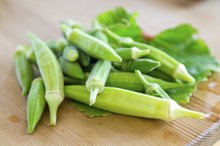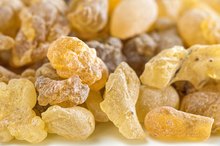What does fact checked mean?
At Healthfully, we strive to deliver objective content that is accurate and up-to-date. Our team periodically reviews articles in order to ensure content quality. The sources cited below consist of evidence from peer-reviewed journals, prominent medical organizations, academic associations, and government data.
The information contained on this site is for informational purposes only, and should not be used as a substitute for the advice of a professional health care provider. Please check with the appropriate physician regarding health questions and concerns. Although we strive to deliver accurate and up-to-date information, no guarantee to that effect is made.
Foods That Help Plantar Fasciitis
Plantar fasciitis is one of the most common foot problems experienced by Americans 2. The American Academy of Orthopaedic Surgeons states that approximately 2 million people in the United States receive treatment for this health problem each year 1. In most cases, conservative treatment methods can help resolve the pain and other symptoms associated with this condition. Certain foods may be helpful in treating your plantar fasciitis, but you should always speak with your doctor before using this natural treatment approach.
If you are experiencing serious medical symptoms, seek emergency treatment immediately.
About Plantar Fasciitis
Your plantar fascia is a thick band of tissue that is located on the underside of your foot. This tissue helps you absorb the shock associated with walking, running and other activities. As you age, your plantar fascia may lose some of its shock-absorbing effects, which can cause this tissue to become inflamed and painful. In some cases, notes the Family Doctor website, your plantar fascia may tear, causing severe pain and debilitation 2. Being overweight and diabetic are two other major risk factors for developing this condition.
- Your plantar fascia is a thick band of tissue that is located on the underside of your foot.
- As you age, your plantar fascia may lose some of its shock-absorbing effects, which can cause this tissue to become inflamed and painful.
A Helpful Dietary Approach
Are There Foods That Heal Shingles?
Learn More
Because some cases of plantar fasciitis involve inflammation of your plantar fascia, you may benefit from consuming foods that help reduce inflammation and swelling throughout your body. According to certified nutritional consultant Phyllis A. Balch, author of "Prescription for Nutritional Healing," some of the most helpful foods in reducing inflammation are rich in essential fatty acids, such as:
- herring
- mackerel
- salmon
- sardines [3](# 'inline-reference::"Prescription for Nutritional Healing"; Phyllis A
Balch
* CNC; 2010'). Other beneficial foods for this health problem may include papaya, pineapple, spinach, blueberries and strawberries.
A Beneficial Food
Sardines may be a beneficial food in reducing inflammation throughout your body, including your plantar fascia. Sardines are one of the most concentrated sources of omega-3 fatty acids, according to the Cleveland Clinic 4. Omega-3 fatty acids are among the most potent anti-inflammatory agents and have long been used in treating a variety of inflammatory conditions. Sardines are also a rich source of vitamin B-12, selenium, vitamin D and protein.
- Sardines may be a beneficial food in reducing inflammation throughout your body, including your plantar fascia.
- Sardines are one of the most concentrated sources of omega-3 fatty acids, according to the Cleveland Clinic 4.
Considerations
Foods to Eat for Low Blood Count
Learn More
Plantar fasciitis is not a life-threatening health problem, although it can significantly impair your ability to perform your usual and customary daily activities, including work and recreational activities. Avoid self-treating your plantar fasciitis using natural treatment measures such as diet and nutrition until you speak with a licensed health care professional about the risks, benefits and limitations of this approach. Further scientific research evidence may be necessary to examine the true efficacy of foods historically used in treating plantar fasciitis.
Related Articles
References
- American Academy of Orthopaedic Surgeons: Plantar Fasciitis and Bone Spurs
- Family Doctor: Plantar Fasciitis: A Common Cause of Heel Pain
- "Prescription for Nutritional Healing"; Phyllis A. Balch, CNC; 2010
- Cleveland Clinic: The Power Of Fish
- American Academy of Orthopaedic Surgeons. OrthoInfo. Plantar Fasciitis and Bone Spurs. Updated June 201.
- UptoDate. PLANTAR FASCIITIS RISK FACTORS. Updated September 13, 2018.
- Cardenuto ferreira R. Talalgia: plantar fasciitis. Rev Bras Ortop. 2014;49(3):213-7. doi:10.1016/j.rboe.2014.03.012
- Ang TW. The effectiveness of corticosteroid injection in the treatment of plantar fasciitis. Singapore Med J. 2015;56(8):423-32. doi:10.11622/smedj.2015118
- Article titled "Joint Mobilization and Stretching Exercise vs Steroid Injection in the Treatment ofPlantar Fasciitis: A Randomized Controlled Study" by D Celik and co-authors published in Foot & Ankle International in 2015.
- Article titled "Treatment Outcomes of Corticosteroid Injection and Extracorporeal Shock Wave Therapy as Two Primary Therapeutic Methods for Acute Plantar Fasciitis: A Prospective Randomized Clinical Trial" by M Mardani-Kivi and co-authors published in The Journal of Foot & Angle Surgery in 2015.
- LeBlond RF, Brown DD, Suneja M, Szot JF. The Spine, Pelvis, and Extremities. In: LeBlond RF, Brown DD, Suneja M, Szot JF. eds. DeGowin’s Diagnostic Examination, 10e. New York, NY: McGraw-Hill; 2015.
Writer Bio
Martin Hughes is a chiropractic physician, health writer and the co-owner of a website devoted to natural footgear. He writes about health, fitness, diet and lifestyle. Hughes earned his Bachelor of Science in kinesiology at the University of Waterloo and his doctoral degree from Western States Chiropractic College in Portland, Ore.









